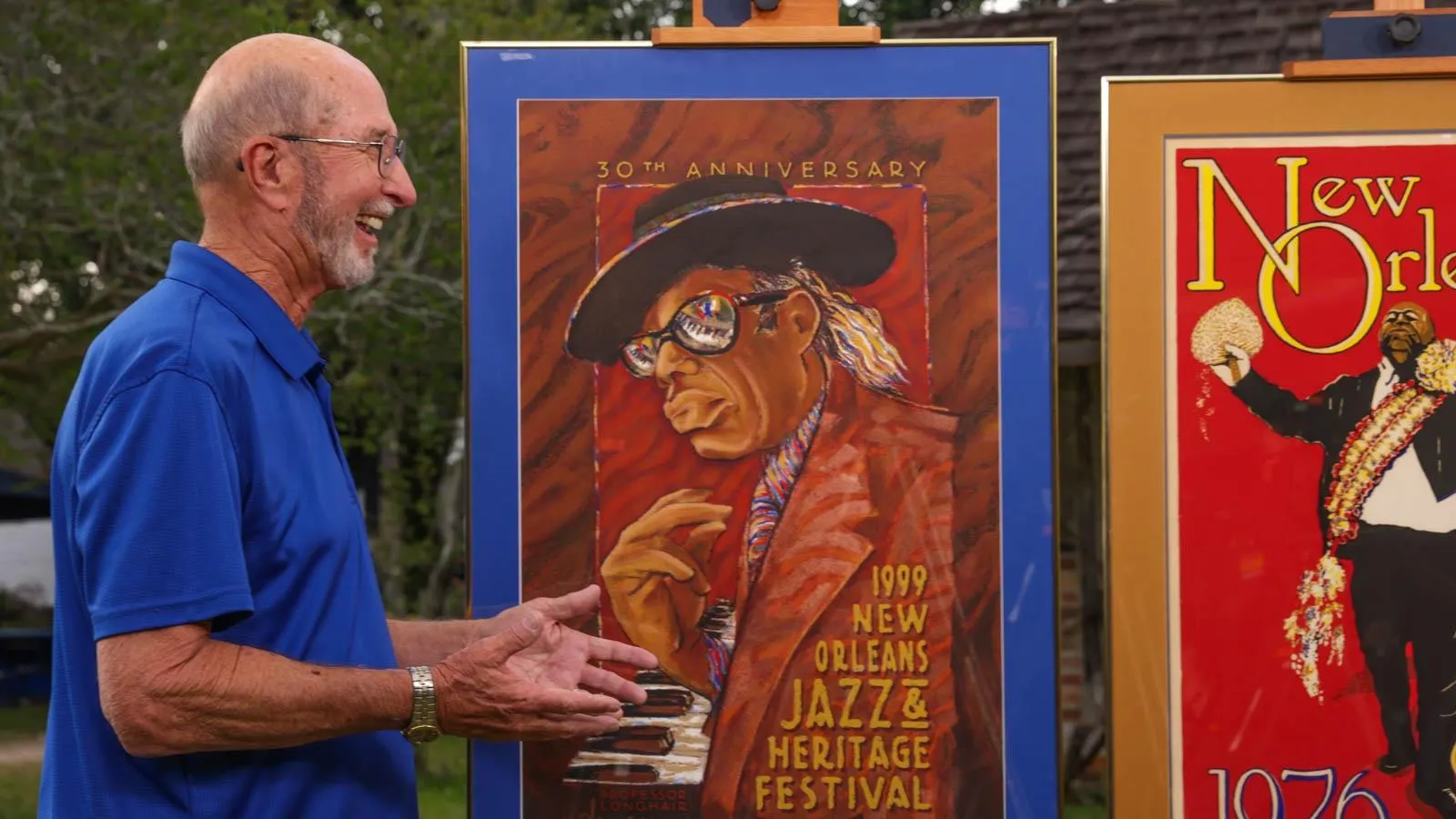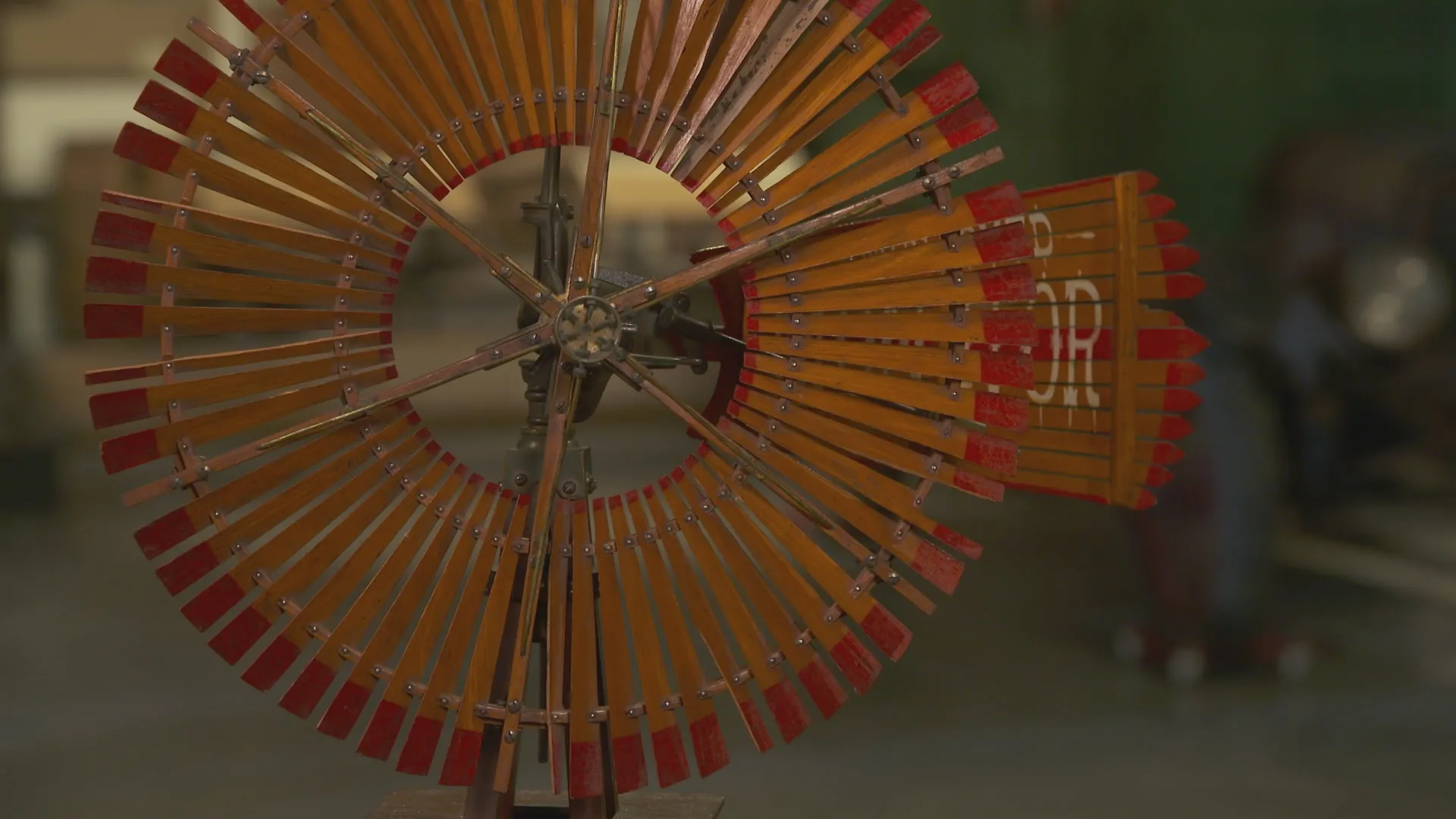GUEST: It's a traveling salesman model of a windmill.
APPRAISER: Okay.
GUEST: Uh, and it was early 1900s. And my father lived on a farm in Wapakoneta, Ohio. And the, the s, traveling salesman came and ended up staying at their, their farm for a while, but couldn't pay for it. And so he left this as collateral and was going to come back with the payment. He never came back. My father, being the youngest of ten, he and his older brother kind of tucked it away and put it up in the hayloft, and my dad ended up with it. He would disassemble it, put it in, in a closet, and keep it safe, and, every once in a while, bring it out, and his li, eyes would light up, because it brought him that memory or whatever, and it was a, a real joy. So, um, he's been gone, but I, it's a reminder of that moment whenever he would get it out and play with it.
APPRAISER: Sure.
GUEST: And, and I've never seen anything, any one like it, so I've, just curious about finding out what it's about.
APPRAISER: Oh, well, it is a beautiful piece. What, um, what year would, would you say that...
GUEST: He was born in 1909.
APPRAISER: Okay.
GUEST: So the teens, I would say.
APPRAISER: It was a traveling salesman's sample of what would be a full-size windmill that a prospective farmer could buy to add to the property. This side is painted on to show that it was made by the Monitor Manufacturing Company in Auburn, Indiana. And on this side of the blade, it shows that it is the improved Monitor. This company began sometime around 1880. A lot of your paperwork here is documented from 1890. The windmill really began in, in mass production in Indiana around 1865. So the Monitor Company out of Auburn, Indiana, came a little bit later, but came with some good advancements that really helped catapult them, uh, to the top of the windmill production. And as it rotates and spins around, this piston goes up and down, which would pump water from 200 feet in the ground or so, and could be used in farming, of course...
GUEST: Mm-hmm.
APPRAISER: ...for, uh, irrigation, for water pumps, uh, for water retention ponds, et cetera. What's fascinating is, not only do you have the salesman's sample, but you have all the ephemera that he would have with him.
GUEST: Mm-hmm.
APPRAISER: (chuckles): You have the quite well used and worn, uh, and written in pocket catalogue, uh, price guide. And the salesman would assist the customer from using the price guide to fill out the order form. In addition, you have several copies of a simple advertisement flyer advertising the disc harrow farm implement that the company had manufactured, as well, uh, which he could, of course, leave behind with the customer...
GUEST: Mm-hmm.
APPRAISER: ...and attempt to get a future sale. In addition, you have a fully illustrated manufacturer's catalogue, which documents all the products, or many of the products, that the company had made. It also describes how the different products work. We do see the, salesman's samples quite often, and a salesman's sample could be for a traveling salesman, which is when we see the case.
GUEST: Mm-hmm.
APPRAISER: Uh, or it could have been used just in the factory as a demonstration.
GUEST: Mm-hmm.
APPRASIER: Given that you have the case, and given that you have the paperwork, that's... The ephemera is what really gets me excited. I would place an auction estimation on this piece, with everything that comes with it, from $8,000 to $12,000.
GUEST: (chuckles)
APPRAISER: Uh, and given how beautiful it all is, I could see it bringing more than that.
GUEST: Wow, that's great. (laughs)
APPRAISER: Do you know, was there a windmill on the farm?
GUEST: I was the youngest of all the cousins. I don't remember if there was.
APPRAISER: (laughs) Okay.













